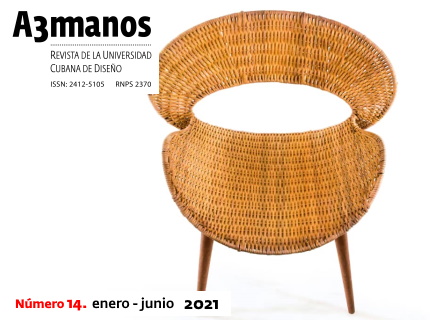The dimensions of Usability in Industrial Design objects.
##plugins.themes.bootstrap3.article.main##
Abstract
After analyzing the different proposals for indicators, qualities and recommendations that define Usability and conclude by establishing the links between them, it is necessary to define those that correspond to the concept of Usability proposed in this research. It is necessary to clarify that, although they were defined for the field of digital systems and interfaces design, most of the qualities analyzed can, in their essence, also be applied to the Objects design, because they are quite general to any type of interaction, regardless of the load of the cognitive components of the system.
##plugins.themes.bootstrap3.article.details##

This work is licensed under a Creative Commons Attribution-NonCommercial-ShareAlike 4.0 International License.
- Attribution — You must give appropriate credit , provide a link to the license, and indicate if changes were made . You may do so in any reasonable manner, but not in any way that suggests the licensor endorses you or your use.
- NonCommercial — You may not use the material for commercial purposes .
- No additional restrictions — You may not apply legal terms or technological measures that legally restrict others from doing anything the license permits.
- ShareAlike — If you remix, transform, or build upon the material, you must distribute your contribution under the same license as the original. NOTE: This point applies to numbers 1 to 20 of the magazine with the previous CC-BY-NC-SA 4.0 license. Does not apply to the new CC BY-NC 4.0 license from Volume 11, Number. 21 (2024).
References
Gordillo, C. (2011). “Herramientas para el tratamiento del factor uso con intervención de la Ergonomía durante el Proceso de Diseño”. Tesis de Maestría. La Habana.
Nielsen Norman Group. (2003). Obtenido de https://www.nngroup.com
Nielsen, J. (1993). Usability Engineering. San Fracisco, USA: Morgan Kaufmann.
Nielsen, J. (2000). Usabilidad. Diseño de sitios Web. Madrid: Pearson Education.
Nielsen, J. (4 de enero de 2012). Nielsen Norman Group. Obtenido de Usability 101: Introduction to Usability: https://www.nngroup.com
Nielsen, J. (4 de enero de 2012). Usability 101: Introduction to Usability. Obtenido de Nielsen Norman Group: https://www.nngroup.com
Norman, D. (1988). La psicología de los objetos cotidianos. New York: Basic Books.
Organización Internacional de Normalización. (2011). ISO/IEC 25010 Ingeniería de sistemas y software - Sistemas y software Requisitos y evaluación de calidad (SQuaRE) - Modelos de calidad de sistemas y software. https://www.iso.org/standard/35733.html: Ratificada en 2017.
Organización Internacional de Normalización. (03 de 2018). ISO 9241-11: 2018 Ergonomía para la interacción hombre-sistema. Part 11: Usabilidad: Definiciones y conceptos. Obtenido de https://www.iso.org/obp/ui/es/#iso:std:iso:9241:-11:ed-2:v1:en
Quesenberry, W. (2001). What does Usability mean?Looking Beyond "Ease of Use". Annual conference-society for technical communication, 48, págs. 432-436.
Shackel, B. (1991). Usability–context, framework, definition, design and evaluation. En B. Shackel, Human factors for informatics usabililty. Cambridge: University Press.
Shneiderman, B. P. (2016). Designing the User Interface: Strategies for Effective Human-Computer Interaction (sexta edición ed.). Pearson. Obtenido de http://www.cs.umd.edu/hcil/DTUI6






















